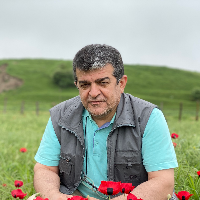Research on the Symbolic Culture of Sassanid Bullae of the National Museum of Iran
Sassanid bullae are indicative of the administrative structure, commerce and other cultural concepts, which usually differ from each other in the sealed figures, size and the number of times they have been stamped. In many cases, these samples are accompanied by symbolic arrays like other cultural data of this period. In order to study of their importance and description and to answer questions about the symbolism mixed with the worldview of Mazdaznan religion and other concepts such as the knowledge of that time, we selected undocumented bullae in the archives of the National Museum. In this regard, semantics, the most frequent arrays, compatibility between these symbols with other symbols this period, relative chronology and their possible origins were investigated. Most of the images stamped on the bullae of this collection include human, animal, and geometric arrays (monograms). Some of the fifty studied bullae studied have lost their value in due to wear and corrosion or breakage. Also, there is no information about how they were discovered. These bullae are assigned to the Sassanid period only based on the writings and arrays. Our research is based on library studies and documentation of bullae of the National Museum archive and conventional methods such as photography and design of flower seals.
Bullae , Sassanid , Symbol , Iconography , Mazdaznan
-
The Head of the Zoroastrian Clergy Class and his Position in the Political System of Sasanians
Meysam Shahsavari *, Seyyed Mehdi Mosavi Kohpar, Alireza Hejebri Nobari, Javad Neyestani
International Journal of Caspian Sea, Caucasus, and Transoxiana Studies, Winter and Spring 2025 -
Qela Dez Azna; New castle in the Parthian and Sasanian territories and its role in local and extra-regional trade
Behzad Hoseyni Sarbisheh *, Seyed Mehdi Mousavi Koohpar, Saeed Amir Hajloo
Journal of Iran Pre-Islamic Archaeological Essays,



